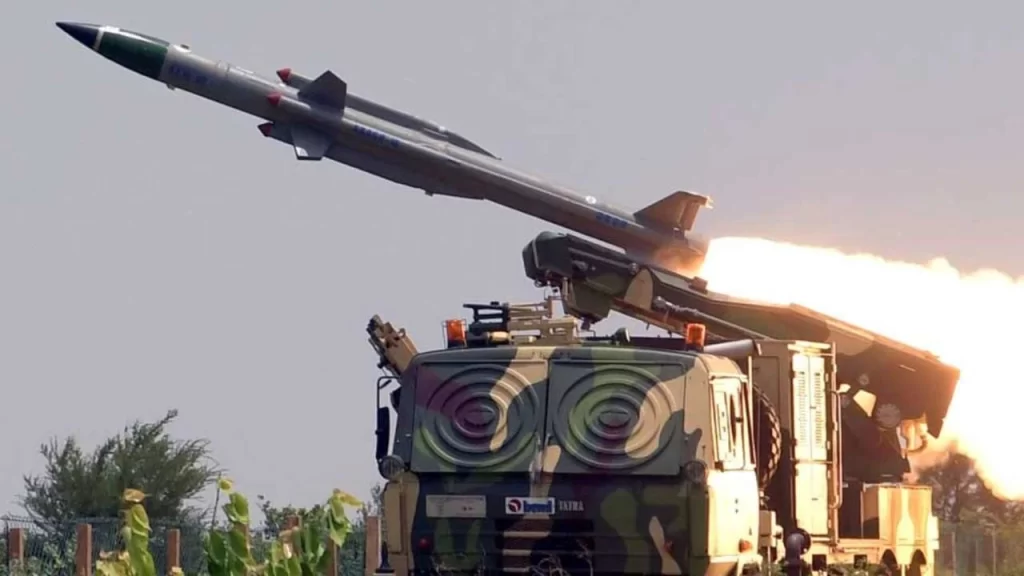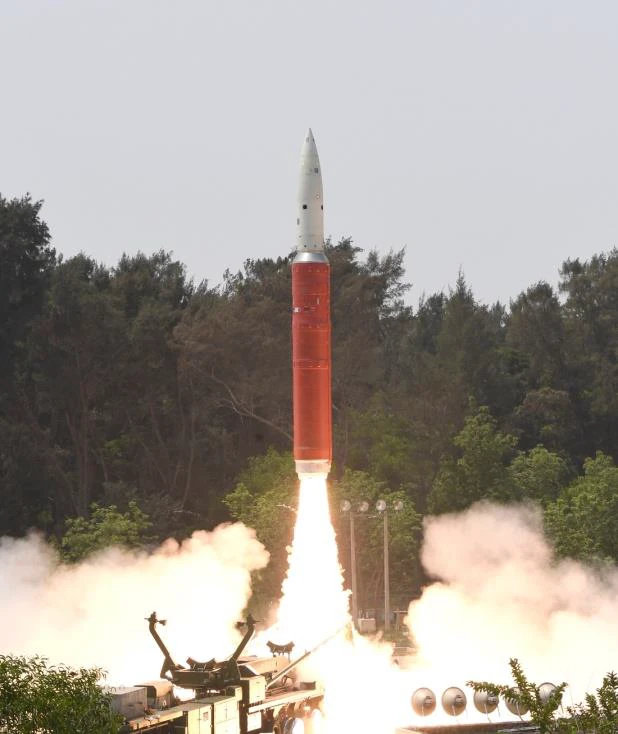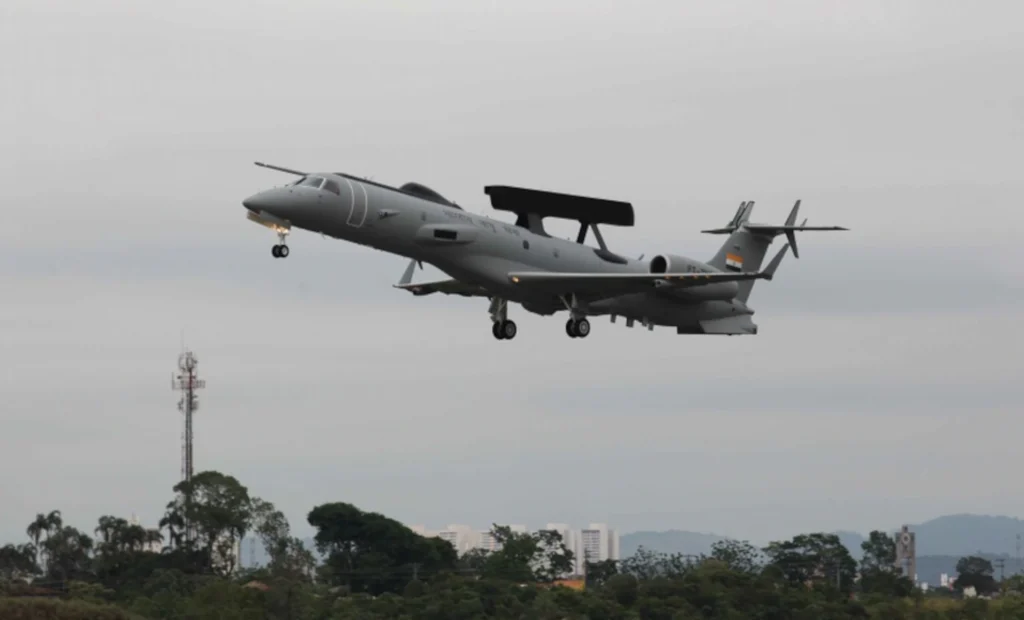India’s national security strategy is uniquely anchored in a robust, multi-tiered air defense system. As threats evolve with the integration of drones, stealth technologies, long-range missiles, and satellite-aided targeting, India has responded with a complex and integrated framework. This framework, which draws upon the strengths of its military services, paramilitary forces, and technological infrastructure, is a testament to India’s innovative approach to aerospace defense. India’s strategy exemplifies coordinated deterrence and tactical readiness from space to the surface, with the scope now extending beyond the traditional air domain to include control of the near-space environment.
The Modern Threat Landscape
Recent reports indicate that China has provided the Pakistan Air Force (PAF) with satellite netcentric support. This exposes a critical vulnerability and reinforces the need for India to develop real-time space domain awareness and anti-satellite (ASAT) capabilities. The space domain has become a new frontier for national security, and India must strengthen its deterrent.
Today’s aerial threats are no longer confined to manned fighters or bombers. The proliferation of unmanned aerial vehicles (UAVs), stealth drones, and hypersonic cruise missiles has transformed air defense into a highly technological and dynamic arena. Countries that once relied on single-layered air defense systems now recognize the need for multiple, interlocking shields that cover various altitudes and threat vectors.
Operation Sindoor: A Game-Changing Aerospace Campaign
On the night of 7 May 2025, India launched Operation Sindoor in response to the brutal killings in Pahalgam. It was a comprehensive aerospace operation, with the Indian Air Force (IAF) playing a pivotal role in demonstrating Indian air dominance. By Day 3 and Day 4, the IAF had achieved air superiority, executing precision strikes against strategic Pakistani assets, including radar installations, nuclear command centers, airstrips, and hangars. Ground damage assessment suggests an 80:20 or even 90:10 advantage for India, underscoring the IAF’s crucial role in the operation.

This operation showcased India’s real-time ability to coordinate space, air, and ground-based assets. Satellite intelligence, fused with airborne sensors and AI-assisted targeting software, enabled precision previously unseen in subcontinental warfare.
Key Systems in Action
BrahMos, SCALP, and Hammer missiles decimated high-value targets. Their extended range and pinpoint accuracy were crucial in neutralizing enemy infrastructure.
Rudram (anti-radiation) and SAAW (Smart Anti-Airfield Weapon) played vital roles in disabling air defense systems and key runways.
Akash and Barak-8 (MR-SAM) systems were instrumental in counter-air operations, neutralizing enemy aircraft and drones.
Akashteer, the integrated air defense command and control system, facilitated seamless detection and engagement by providing real-time updates and firing authorizations.
Zen Technologies’ enhanced L-70 guns proved deadly against drone swarms, combining traditional firepower with modern electronic targeting aids.
Learning and Adapting
The IAF revised engagement protocols, analyzed missile behavior, and adapted standoff ranges. This continuous adaptation to new threats instills confidence in the audience about India’s preparedness. AWACS and MAWS systems were optimized, and S-400 systems were deployed offensively. With the HQ-9 network in Lahore neutralized, India created an aerial corridor that led to the destruction of AWACS, IL-78s, F-16s, JF-17s, and several grounded assets.
The lessons from early encounters were immediately put to use, demonstrating India’s adaptability in the face of evolving threats. New electronic warfare signatures of enemy missiles were rapidly disseminated across the network, enabling faster reaction times. Ground-based radar stations synchronized better with airborne early warning aircraft. IAF pilots adjusted their engagement envelopes based on new threat assessments, showcasing India’s ability to learn and adapt in real-time.

The ASAT Imperative
Operation Sindoor revealed the reality of satellite-guided BVR warfare. India must:
- Develop real-time space surveillance with indigenous and cooperative satellite constellations.
- Field hard-kill and soft-kill satellite options to eliminate or turn off enemy space assets.
- Build space denial capabilities through electronic warfare, including jamming and spoofing adversarial space communication.
- Integrate ASAT alerts into Akashteer and IACCS systems for a seamless decision-making loop.
India’s Defence Space Agency (DSA) must be equipped to lead in this arena. Integrating ISRO’s capabilities with defense operations must now extend into real-time support during conflict.
The Backbone: Indian Air Force’s Core Role
The IAF operates an extensive network of sensors, radars, and AWACS, backed by a Su-30 MKIS, Rafales, Mirage-2000s, and Mig-29 fleet. Its layered missile systems include SAMs of various ranges and older yet serviceable systems like the Pechora S-125. L-70 guns serve as close-range defenses. The success of the IAF’s core role in defending the nation’s airspace is a source of pride for the audience.
The IAF also invests in indigenous technologies like the Tejas Mk2 and the AMCA (Advanced Medium Combat Aircraft), further strengthening its role in future aerospace warfare. These platforms will include stealth features, supercruise capabilities, and next-generation avionics.
Army Air Defence: A Complementary Shield
The Indian Army supplements this with mobile systems such as Kvadrat, Tunguska, and Schilka. Akash and shoulder-fired Igla missiles enhance battlefield flexibility. Infantry adaptations, like airburst rounds from Carl Gustaf launchers, underscore frontline ingenuity.
In recent times, the Army has also emphasized counter-drone measures. These include RF jammers, radar-linked sniper stations, and AI-based visual detection software that supports forward units in neutralizing low-tech drone threats from non-state actors.
Naval Air Defence: Sea-Based Shielding
INS Vikramaditya and INS Vikrant are the backbone of maritime air defense. Armed with Barak-8, CIWS, and layered radar systems, these carriers form floating fortresses capable of repelling threats at sea.
The Indian Navy also integrates shipborne drones, underwater detection grids, and cooperative anti-submarine and anti-air networks with friendly navies. Maritime air defense is enhanced through joint surveillance systems with partner nations like France, the U.S., and Australia.
Border Security Force: The Often-Overlooked Layer
The BSF contributes vital ground-level surveillance and threat tracking along the borders. Their integration into the command network ensures localized awareness and rapid reaction capabilities.
The role of BSF is set to grow as drone incursions across the western and northern borders become more frequent. Their forward deployment makes them ideal candidates for the first line of visual or sensor-based threat confirmation.
Unified Control: The Brain Behind the Shield
A sophisticated Command and Control (C2) architecture, supported by Control and Reporting Centers (CRCs), manages cross-service coordination. Weapon release protocols ensure synchronized action and prevent friendly fire incidents.
This central nervous system ensures that all data, from a radar ping to an AWACS input or a BSF field report, is integrated into a single actionable picture. It dramatically improves India’s OODA (Observe, Orient, Decide, Act) loop in combat.

Multilayered Defence: From Orbit to Earth
India’s layered approach spans BMD systems (PAD and AAD), drone defenses, and close-in weapons. The lowest tier is evolving to tackle drone swarms and loitering munitions with radar, optical sensors, and electronic jamming.
Upcoming systems like the XR-SAM (Extended Range Surface to Air Missile), directed energy weapons, and quantum radar will add further teeth to India’s evolving aerospace shield.
India is also exploring high-altitude pseudo-satellites (HAPS) to plug gaps in surveillance over remote or mountainous terrain. These platforms will provide continuous coverage and act as early warning systems during peace and conflict.
Strengths, Successes, and Sobriety
Operation Sindoor highlighted the importance of integrated aerospace capabilities. While the PL-15 missile remains a formidable adversary asset, India’s adaptive strategy, flexible tactics, and technological edge ensured dominance.
The success of Operation Sindoor has also reaffirmed India’s defense procurement strategy, which blends indigenous innovation with high-quality imports and focuses on interoperability, survivability, and scalability.
Conclusion: The Future is Aerospace, Not Just Air
The battlefield now extends into the exosphere. India must continue modernizing its aerospace shield—responsive, resilient, and ready for threats from any altitude. Operation Sindoor is a story of success and a call to elevate the defense strategy beyond the skies. India must guard not only the sky but also the space above it.
With a defense strategy now inclusive of space-based intelligence, real-time threat neutralization, and cross-domain response, India is poised to lead in aerospace defense in the 21st century. The message is clear: deterrence is not two-dimensional but orbital.
